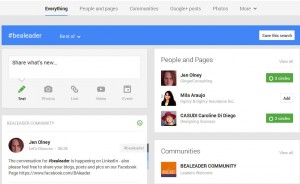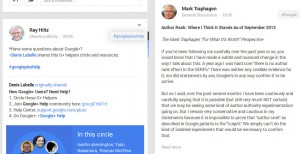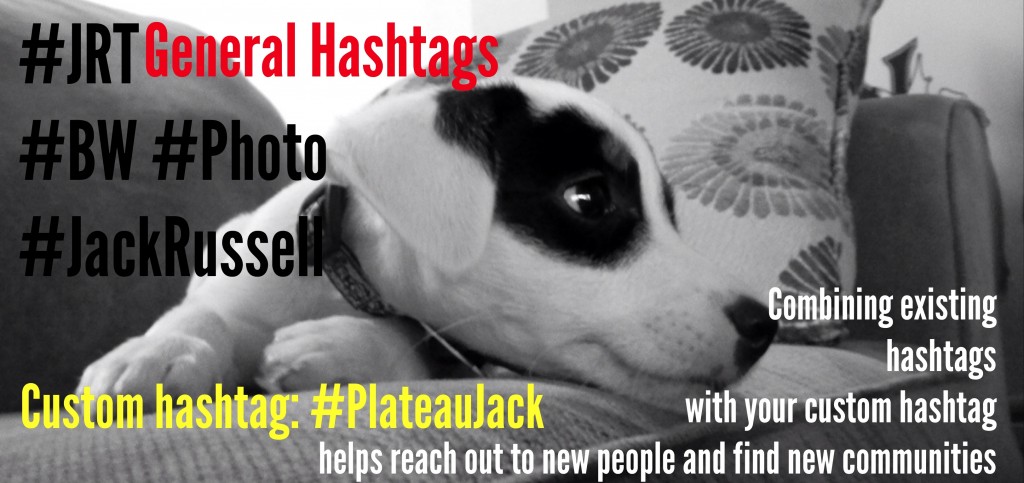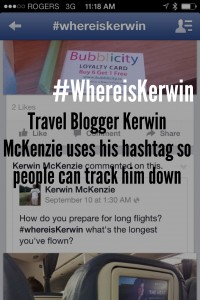Hashtags are used on all social networks now, becoming a critical way to communicate and link information everywhere from Pinterest, to Facebook and Twitter, Hashtags are the key to discovering, communicating and sharing.
Let’s have a conversation about hashtags and demystify what it’s all about and how to use them once and for all. Your business activity and personal activity will become far more efficient as a result.
The main problem with hashtags
People think hashtags are a bunch of nonsense. Too many people see others using hashtags and think it is okay to assign a “#” to any word, phrase or sentiment, and run with it. Although many people do this, it’s a mistake to underestimate or avoid hashtags because you think it is just a bunch of hipster jargon. Does the video below feel familiar?
Let’s face it, hashtags are throwing (business) people off.
Hashtag explanation made easy :
A hashtag is that it is a critical way of grouping information together, think of it like a file folder.
If you opened your “filing cabinet” and wanted to find everything about Dogs, you would click on #Dogs. However, the search results might be too large. So, you might then want to create a new hashtag or find one in use that specifies the type of dog, for example #JRT , #JackRussell, or even #Puppy. The cool thing about hashtags is that you can combine them, so if you put all of the above in one tweet, or post on facebook, you will be indexed in with the related items in all categories for the words you chose.
How do you learn to use a hashtag for business?

When you click on a hashtag on Google Plus you find all items and people related to the hashtag! Try it out!
- First, you need to identify where your posts or subject matter fits in. Chances are there is already a hashtag being used for your area of communication.
- Find someone who is already active in your field, and then see what hashtags they are using.
- If you see one you like, click on it. A new list will open in your Twitter, or Facebook or Google+ that will only include all posts with the given hashtag.
- Look at the other hashtags being used as well.
- Create a list for yourself of hashtags that you would be a part of, and start using them.
Starting Tip:
If looking for hashtags in your business field is overwhelming at first, try searching for hashtags in something that interests you. Have a favorite author, hobby, or sports team? Try the above in those subject areas. Then as you start to follow how the communication flows , you can start looking in your own field. The primary objective is to start seeing the pattern and organization, as well as strategy behind using hashtags. You can not throw hashtags around without a strategy and expect results.
Why are hashtags important?
The beauty of a hashtag is that it brings you into the communication lines of people you don’t know.
When you post without hashtags, you access the people you already know.
When you post with hashtags:
- You make your information searchable by anyone
- You appear in the stream of the hashtag in question
- You meet new people
- You find new resources
- You discover new opportunities
- You help people keep track of your relevant posts
- You build an audience and community
Cut through the clutter
Hashtags also help people sort through a series of posts to zoom in on what is important to them. For example, if you go to my Instagram page, you will find photos of soccer, food, scenery, business. Let’s say you only care about pictures of my puppy. Well, you can click on the custom hashtag and you will just see the results from the photos I tagged with that. Custom hashtags make it easy for people to get through all the junk out there. Whether it be on one page, or throughout the social networks.
It’s all fine to use this for cute things like puppies, but how can you use this for business?
Well, for example, I can create a hashtag for insurance, but some reflection has to go beyond the hashtag itself, or the category, and into what is appealing to the people who I want to find the item. Let’s say I want to help people save money. What will make it easier for people looking to save money on home insurance is if tag a series of posts #Home #Insurance #savings or #homesavings combined with #insurance. The world is a big place, so I can even zoom in on my target audience more by adding a hashtag for the city I serve, the region or state.
You can do this with anything. It just takes some strategy. Make your hashtags relevant and helpful. Make it easy for people to understand at a glance the relevance. Don’t try and be cryptic or too fancy, get to the point and start falling into the streams of communication that speak to your target audience.
Starting to see the possibilities?
Rules for hashtags & brands:
1. Be consistent.
Sometimes you can use a hashtag, and then no one else uses it. So you can get discouraged and think, I won’t use this anymore. Don’t do that. If your hashtag is well thought out, and you want it to stick keep using it. Everything takes time. Be patient, keep posting items with your hashtag, let people know about your hashtag and what it means. Do not give up.
2. Introduce others to your hashtag by sharing their posts while using your hashtag.
For example, let’s say you find an article that is hashtagged and it is in an area that your own readers (or prospective readers) would find interesting
- Share the post keeping the original hashtags and originators identity (don’t delete the source – thats poor etiquette) – In the example below the source is @GingerConsult and the Source hashtag is #BeALeader
- Add on your hashtags.
People who find the article interesting in the original group (in the example below: #BeALeader) may also notice the additional hashtags added, and click through to see what’s going on there. They may not check out the other hashtags at first, but eventually if they see the hashtags often enough they will investigate. If they like what they find, or want to contribute to those “files” if we can still continue to relate to my file cabinet example, then they may adopt the hashtags. Be consistent, share the hashtag with valuable and relevant information and people will start to join you in your “Hashtag community”
3 Steps to Making Anyone on Your Team Feel Like a VIP #bealeader http://t.co/6SB3qZKu6G @gingerconsult #tchat #yourcustomhashtag #impact99
When nonsense is exactly what fits.
Not every business is serious, and the brand voice your organization uses must be taken into consideration when choosing hashtags, so this being said there are times that a silly hashtag or something out of the ordinary that may sound like nonsense is exactly what a brand needs. David’s Tea does an amazing job of doing this.
Warning: don’t try this at home. But if you do, please use water and please tag the picture with #TeapotBlowing. pic.twitter.com/lQj2R6KGsB
— DAVIDsTEA (@DAVIDsTEA) September 12, 2013
[toggler title=”If you want to check that out, just click here to expand this example of #TeaPotBlowing ” ]Using hashtags for fun and nonsense as a business strategy
David’s Tea is a brand that really knows how to relate to their audience. They are one of my favorite brands when it comes to examples of using fun for business effectively. Here, you see how they started a conversation hashtagging a picture with #Teapotblowing resulting conversation and other items become linked as others participate. The top post is the last one, where I also link in a new app called Definer, which is also really cool, where you can define new words and phrases, as you want to.
I linked them into it using a hashtag, while still maintaining the original hashtag – expanding the potential reach of the original idea and bringing more people into the conversation. In this same picture you see how another user hashtagged their entry for a teapotblowing contest. Suddenly David’s Tea takes their own personalized hashtag and turns it into a movement. If a hashtag is interesting it will generate activity and perhaps a following and new community.
[/toggler]
Hashtags look funny but they have strong business value.
Next time you see a hashtag, I hope that this helps take the oddity of it all to realize that there is great opportunity for learning, connecting and reaching new people and communities. When all is said and done, the hashtag is pretty cool. What do you think?
How are you using hashtags? Will you give them a try? I’d love to know!
This post was originally featured on BroadSuite and can be found here.



